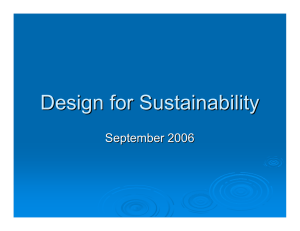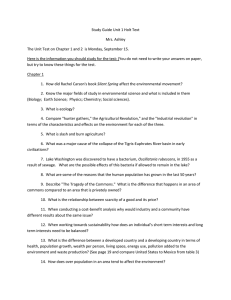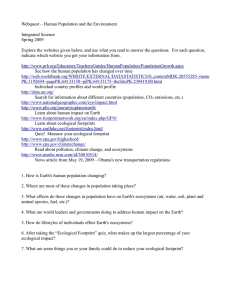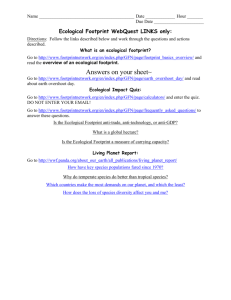15.992 S-Lab: Laboratory for Sustainable Business
advertisement
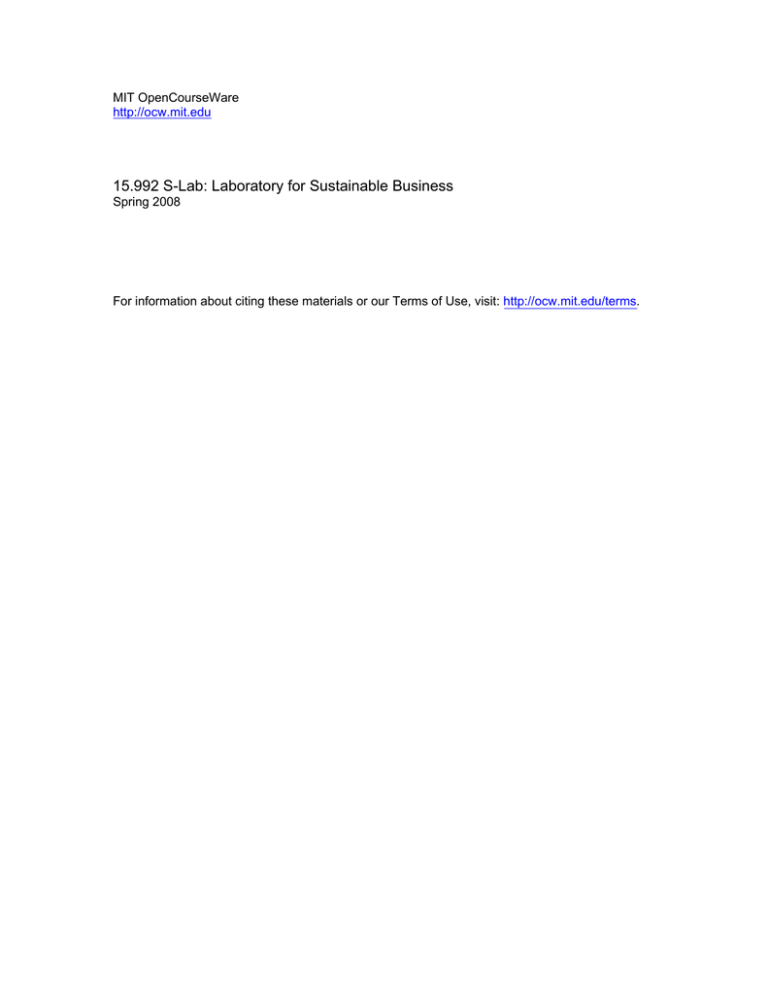
MIT OpenCourseWare http://ocw.mit.edu 15.992 S-Lab: Laboratory for Sustainable Business Spring 2008 For information about citing these materials or our Terms of Use, visit: http://ocw.mit.edu/terms. 15.992 S-Lab (Laboratory for Sustainable Business) Spring 2008 Rebecca Henderson, Rick Locke, Sarah Slaughter, John Sterman Assignment and Readings for Class 2: The State of the World Due: Thursday 7 February 2008 In Class 2 we ask, What is “sustainability”? How can it be measured? What do current trends in population, economic output, development, resource use, climate change and other areas tell us about the challenges of creating a sustainable world? As preparation, we ask you to complete two short surveys and read several articles. All the readings are available at the MIT course site. Note: to compile the results of the surveys in time, please complete them before Thursday morning. Thanks. 1. Please read Wackernagel, M. et al. (2002) Tracking the ecological overshoot of the human economy. Proceedings of the National Academy of Sciences (US), 99(14), 9 July, 9266-9271. This paper defines the concept of “ecological footprint” and reports measures for the total ecological footprint of the world. The world’s ecological footprint is the total productive land (and ocean) area required to support the current use of resources and production of wastes sustainably. 2. Go to the site of the Global Footprint Network, <http://www.footprintnetwork.org/> and read the sections under the heading “Ecological Footprint” <http://www.footprintnetwork.org/gfn_sub.php?content=footprint_overview> 3. Now take the ecological footprint quiz at <http://www.footprintnetwork.org/en/index.php/GFN/page/personal_footprint_calculator/> (also accessible from the GFN site). A. Base your answers on your current lifestyle, as a student living here in the Boston area. Send us your results by completing the “Ecological Footprint Survey” available at the survey page on the MIT course site. B. As a student, you probably live in a smaller house/apartment, drive less, and fly less than you likely will later in your career. Recalculate your footprint with estimates of the size of house and other inputs that you think might correspond to the lifestyle to which you aspire when your student loans are paid off, e.g., when you make partner or when your startup goes public (consider your response to the survey in part 0). Be honest with yourself. Enter your results in the MIT course site survey. C. Note: there is no best or right answer to the survey questions. Your grade does not depend on your responses—unless you do not complete them. We will report out only the average and distribution of responses—no names. 4. Please read Gilman, N. et al. (2007) Impacts of Climate Change. Global Business Network (available in the readings under Class 2 on the MIT course site). This report asks how climate change might affect our economic, social and political systems, using a scenario approach. 5. Recommended Reading: The following are posted on the MIT course site for you and are recommended to provide greater coverage of important environmental and ecological issues (most are from a special section of the journal Science devoted to sustainability that appeared in 2003). I particularly recommend the Holdren article. Holdren, J. (2008). Science and Technology for Sustainable Well-Being. Science. 319, 25 January, 424-434. Cohen, J. (2003) Human Population: The Next Half Century. Science. 302, 14 November 1172-1175. Pauly, D. et al. (2003) The Future for Fisheries. Science. 302, 21 November, 1172-1175. Jenkins, M. (2003) Prospects for Biodiversity. Science. 302, 14 November 1175-1177.
